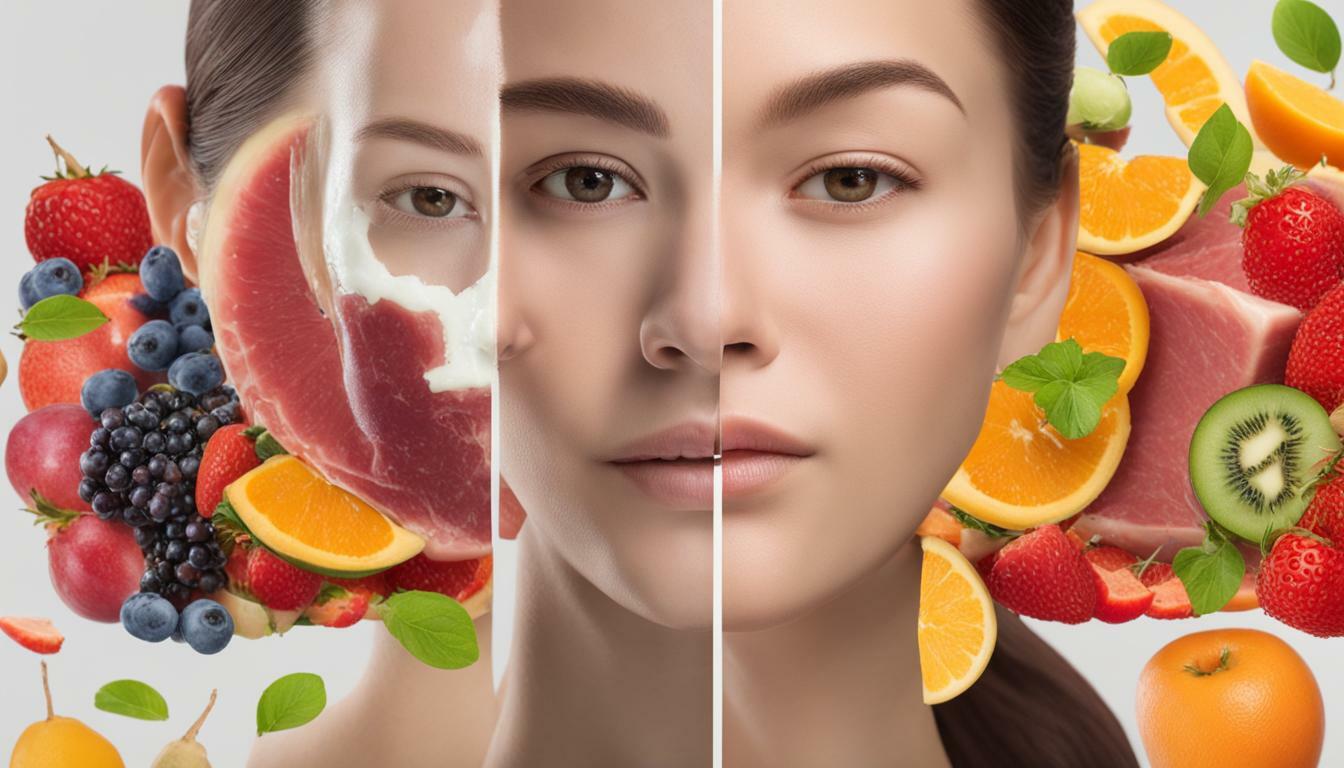So, you want to know how to use acne control gel to get rid of those pesky pimples? Well, you’ve come to the right place! Acne control gel can be a game-changer when it comes to banishing breakouts and achieving clearer skin. In this article, we’ll walk you through the steps of using acne control gel effectively and help you understand the benefits it can bring to your skincare routine.
First things first, it’s important to cleanse your face before applying acne control gel. This will help remove any dirt, oil, or makeup that may be on your skin, allowing the gel to penetrate and work its magic. Once your face is clean, squeeze a small amount of the gel onto your fingertips and gently massage it onto the affected areas. Be sure to cover all the spots where you have acne or tend to break out.
Acne control gel works by targeting the bacteria and excess oil that contribute to acne, and it also helps to reduce inflammation and redness. When using the gel, it’s important not to overdo it. Start with a small amount and gradually increase if needed. It’s also crucial to follow the instructions provided by the specific brand you’re using, as different products may have slightly different application methods.
In conclusion, using acne control gel can be a great addition to your skincare routine if you’re struggling with breakouts. It’s a simple and effective way to combat acne and achieve clearer, healthier skin. In the next steps, we’ll delve into more details and recommendations for the best practices when using acne control gel. So stay tuned and get ready to say goodbye to those pesky pimples!

How To Use Acne Control Gel
Acne is a common skin condition that affects people of all ages, and many individuals seek effective solutions to treat it. Acne control gels have become increasingly popular as a means of managing and preventing breakouts. In this article, we will discuss why using acne control gel can benefit your skin, how it works for different skin types, and provide you with a step-by-step guide on how to incorporate it into your skincare routine.
Understanding the Benefits of Acne Control Gel
Acne control gels are specifically formulated to target and treat acne. They often contain ingredients such as salicylic acid, benzoyl peroxide, or tea tree oil, which have been proven effective in combating breakouts. By using an acne control gel, you can experience several benefits:
- Reduction in acne breakouts: Acne control gels work by unclogging pores, reducing inflammation, and preventing the formation of new acne lesions. With regular use, you may notice a significant decrease in the frequency and severity of breakouts.
- Clearer and smoother skin: These gels help to remove excess oil, dirt, and dead skin cells from the surface of your skin, resulting in a clearer and smoother complexion.
- Improved skin texture: Acne control gels can also help to minimize the appearance of acne scars and uneven skin texture, promoting a more even and radiant complexion.
How Acne Control Gel Works for Different Skin Types
Not all acne control gels are created equal, and what works for one person may not necessarily work for another. Understanding your skin type is crucial in selecting the right acne control gel for your needs.
- Oily skin: If you have oily skin, opt for an acne control gel that contains ingredients like salicylic acid or benzoyl peroxide. These ingredients work by reducing oil production and preventing clogged pores.
- Dry or sensitive skin: Individuals with dry or sensitive skin should look for acne control gels that are gentle and non-drying. Ingredients like tea tree oil or aloe vera can provide the necessary acne-fighting benefits without causing excessive dryness or irritation.
- Combination skin: For those with combination skin, finding the right balance is key. Look for gels that are formulated for combination skin types, as they will provide targeted treatment for acne-prone areas while still keeping the rest of your face hydrated and balanced.
Choosing the Right Acne Control Gel for Your Skin
With a wide range of acne control gels available on the market, it can be challenging to determine which one is best for you. Here are a few tips to help you choose the right acne control gel for your skin:
- Consult a dermatologist: If you are unsure about which acne control gel to use, it is always a good idea to consult a dermatologist. They can assess your skin type and recommend products that are suitable for your specific needs.
- Read product labels: Pay attention to the ingredients and their concentrations. Look for gels that are specifically formulated for your skin type and contain effective acne-fighting ingredients.
- Consider your preferences: Think about the texture, scent, and overall feel of the gel. Using a product that you enjoy applying can make your skincare routine more enjoyable and encourage consistency.
Preparation
Before applying acne control gel, it is essential to prepare your skin properly. This will ensure that the gel can effectively penetrate the skin and provide the desired results.
Cleanse Your Face Thoroughly
Start by cleansing your face thoroughly using a gentle cleanser. Remove all traces of makeup, dirt, and excess oil. Use lukewarm water to avoid stripping the skin of its natural moisture.
Gently Exfoliate Your Skin
Exfoliation helps to remove dead skin cells and unclog pores, allowing the acne control gel to penetrate better. Choose a non-abrasive exfoliator and gently massage it onto your face in circular motions. Rinse thoroughly with water.
Apply a Toner
After exfoliating, apply a toner to restore the pH balance of your skin and prepare it for the acne control gel. Toners can also help to tighten pores and control excess oil production. Use a cotton pad or your hands to apply the toner evenly across your face.
Application Techniques
Once your skin is prepped, it’s time to apply the acne control gel. Follow these techniques to ensure proper application and maximum effectiveness.
Start with a Small Amount
Begin by dispensing a small pea-sized amount of the acne control gel onto your fingertips. You can always add more if needed, but starting with a small amount will prevent wastage and potential irritation.
Use Clean Hands or an Applicator
Cleanliness is essential when applying any skincare product, especially when dealing with acne-prone skin. Make sure your hands are clean before applying the gel, or use a clean spatula or cotton swab to scoop out the desired amount.
Apply the Gel in a Thin, Even Layer
Using gentle, upward strokes, apply the acne control gel in a thin and even layer across your face. Pay special attention to areas prone to breakouts, such as the forehead, nose, chin, and cheeks.
Avoid Rubbing or Massaging the Gel
While it may be tempting to rub or massage the gel into your skin, refrain from doing so. Instead, gently pat or press the gel into your face, allowing it to absorb naturally. Massage can irritate the skin and potentially exacerbate acne.
Target Areas
To effectively treat acne, it is essential to focus on specific areas of concern. Here are some recommendations on how to target different skin issues with the acne control gel.
Focus on Acne-Prone Areas
Pay extra attention to the areas of your face that are prone to acne breakouts. This may include the T-zone (forehead, nose, and chin) as well as the cheeks. By targeting these areas, you can prevent the formation of new breakouts and reduce overall inflammation.
Apply Directly on Active Breakouts
If you have active acne breakouts, apply a small amount of the acne control gel directly onto each pimple or blemish. This targeted approach can help to speed up the healing process and reduce redness and swelling.
Treat Acne Scars with a Second Layer
If you have acne scars or hyperpigmentation, consider applying a second layer of the acne control gel to these specific areas. The gel’s active ingredients can help reduce the appearance of scars over time, promoting a more even complexion.

Follow Instructions
To ensure the best results and minimize the risk of irritation, it is crucial to follow the manufacturer’s guidelines when using an acne control gel.
Read and Follow the Manufacturer’s Guidelines
Each acne control gel may have specific instructions on the frequency of application, recommended usage times, and potential side effects. Take the time to read and understand these guidelines before incorporating the gel into your skincare routine.
Frequency of Application
Most acne control gels should be used once or twice daily. However, it is essential to follow the recommended usage as excessive application can lead to dryness, irritation, or other adverse effects. Start with a lower frequency and gradually increase if necessary.
Avoid Combining with Other Acne Treatment Products
While it may be tempting to use multiple acne treatment products simultaneously, it is generally not recommended. Combining different active ingredients can cause excessive dryness, irritation, or even counteract each other’s effects. Stick to using one acne control gel at a time to avoid potential complications.
Skin Care Routine
Incorporating acne control gel into your daily skincare routine is the key to achieving clearer skin. Follow these steps to ensure you are using the gel effectively.
Use in the Morning and Evening
For optimal results, apply the acne control gel in the morning and evening as part of your skincare routine. This regular and consistent application will help to prevent breakouts and maintain the overall health of your skin.
Apply Moisturizer and Sunscreen Afterwards
After applying the acne control gel, it is crucial to follow up with a moisturizer to keep your skin hydrated. Look for a lightweight, non-comedogenic moisturizer that won’t clog pores. Additionally, make sure to still apply sunscreen during the day to protect your skin from harmful UV rays.

Results and Expectations
When using acne control gel, it is essential to manage your expectations and give the product time to work effectively.
Be Patient – Results Take Time
Acne control gel is not a quick fix. While you may start to notice improvements within a few weeks, significant results may take several months of consistent use. Be patient and continue using the gel as directed for the best chance of achieving clearer skin.
Observe Changes in Your Skin
Regularly monitor your skin for any changes or improvements. Take note of any reduction in breakouts, decrease in redness or inflammation, and improvements in overall skin texture. By tracking these changes, you can determine the effectiveness of the acne control gel and make any necessary adjustments to your skincare routine.
Consult a Dermatologist If Needed
If you are not seeing the desired results or experiencing adverse effects, it is advisable to consult a dermatologist. They can assess your skin and provide professional advice on the best course of action. They may recommend alternative treatments or adjust your skincare routine to better suit your needs.
Possible Side Effects
While acne control gels are generally safe to use, there are potential side effects and allergies to be aware of.
Common Side Effects of Acne Control Gel
Common side effects may include dryness, peeling, redness, and mild irritation. These effects are usually temporary and subside as your skin adjusts to the product. If any side effects persist or worsen, discontinue use and consult a healthcare professional.
Rare Side Effects and Allergies
In rare cases, individuals may experience more severe reactions such as severe skin irritation, rash, or allergic reactions. If you notice any unusual or concerning symptoms, stop using the product immediately and seek medical attention.

Tips for Best Results
Follow these additional tips to maximize the effectiveness of your acne control gel and achieve clear, healthy-looking skin.
Maintain a Consistent Routine
Consistency is key when using acne control gel. Stick to your skincare routine, follow the recommended application guidelines, and give the product time to work. Skipping applications or using the gel sporadically may hinder your progress.
Keep Your Skin Hydrated
While acne control gels are beneficial for managing breakouts, they can also cause dryness or irritation. To combat this, ensure that your skin stays adequately hydrated. Use a gentle, non-comedogenic moisturizer after applying the gel, and drink plenty of water to keep your skin hydrated from within.
Adopt a Healthy Lifestyle
In addition to using acne control gel, maintaining a healthy lifestyle can greatly contribute to clearer skin. Get enough sleep, eat a balanced diet rich in fruits and vegetables, exercise regularly, and manage stress levels. These lifestyle factors can have a significant impact on your skin’s health and overall appearance.
Conclusion
If you’re struggling with acne, incorporating an acne control gel into your skincare routine may be a game-changer. By understanding the benefits of acne control gel, choosing the right product for your skin type, and following the proper application techniques, you can effectively manage and prevent breakouts. Remember to be patient, observe changes in your skin, and consult a dermatologist if needed. With consistent use and the right approach, you can achieve clearer, healthier-looking skin with the help of acne control gel.
More on Can L Glutamine Cause Acne





